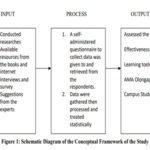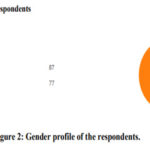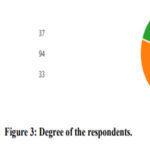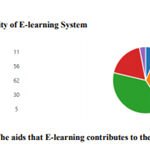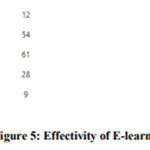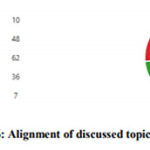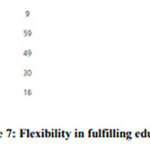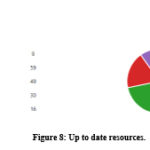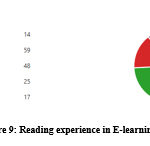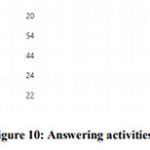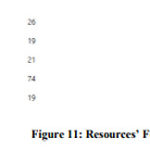Introduction
The advancement of technology today has activated vast
changes by the way we get to, expend, talk about, and offer substance. AMA
Olongapo Campus is the only IT Academic Institutions that offers E-learning
program that integrates with blended learning and face to face method of
delivery. Normally, learning is sticking to this same pattern. Whereas numerous
need learning at a state of need, numerous learn during evening and at
weekends.
By giving a contrasting option to the paper-based learning
and testing of customary classrooms, e-learning is a successful route for
associations to essentially lessen their carbon impression. On one hand, it is
noticed that e-learning is at any rate as viable as customary instructional
techniques (Rosenberg, Graduate and Matear, 2003), and that there are no
significant contrasts in scholastic execution between the more conventional and
more innovation arranged methods of guideline (Cavanaugh, 2001). Then again,
many
surveys go further, mirroring a primarily inspirational state of mind towards the effect of e-learning (Mayer, 2003). When we measure the students’ performance using e-learning, it gives quantifiable information followed continuously all through every period of learning. This information can be utilized to enhance their learning technique. The researchers want to assess the effectiveness of the e-learning in AMA Computer College Olongapo Campus.
Statement of the Problem
The study will focus on the Assessment of the Effectiveness of E-Learning of AMA Olongapo Campus.
Specifically, the research study sought to find answers to
the following questions:
1. What is the profile of the respondents when group
according to:
• age;
• sex;
• course?
2. What criteria are appropriate for the Assessment of the
Effectiveness of E-Learning Tools to the students?
3. What are the e-learning materials available to Students
for curriculum completion?
4. What are the strategies for improving the use of
e-learning materials in AMA Olongapo Campus?
Significance of the Study
The study of Assessment of the Effectiveness of E-Learning can be a learning paradigm in the tertiary schools by enhancing the students’ knowledge and skills as well of AMA Computer College Olongapo City, Philippines. The goal of the study is to determine what students needs to learn before the eLearning course, though summative assessment gauges knowledge mastery after the eLearning course. Research works are left upon with a view to broadening the wilderness of information. The present investigation was accordingly completed with this same goal, particularly in the field of e-learning. It has along these lines, added to the augmentation of the wilderness of information in the accompanying ways.
To begin with, the examination has demonstrated the
prescient energy of the chose factors, particularly
Scope and Delimitation
The target users of the study are the Senior High School and Collegiate students who are currently enrolled in AMA Olongapo Campus. The student models of learning were recognized on the premise of a particular example including those under e-learning study show and those under the conventional examination display. Also, the hypothetical idea of this investigation constrains its immediate pertinence for the instructive praxis. Along these lines, it is trusted that future research may moreover concentrate on how understudy perceptions about learning are affected with regards to ordinary learning conditions. The outcomes could empower instructive professionals to support the appropriation of understudy learning models which summon a profound arranged and self-controlled examination procedure.
Hypothesis
The purpose of this study was to determine the effects of the
Assessment of the Effectiveness of E-Learning Tools among studemts of AMa
computer College
Conceptual Framework and Theoretical Frameworks
The input is consisting of conducted researches, available
resources from the books and internet, interviews, survey and suggestions from
the expert. Wlhile, the second component is a self-administered questionnaire
to collect data was given to and retrieved from the respondents and data were
gathered then processed and treated statistically. Lastly. Assessed the
Effectiveness of E-Learning tools to AMA Olongapo Campus Students were the
output of this study.
Review of Related Literature
Zare, Sarikhani, Salari and Mansouri quotes Levy’s definition of e-learning as a system based on technology, organization, and management which bestows upon the students the ability to learn via internet and facilitates their learning. Additionally, Zare, et al., stated that the use of electronic technologies has led to the development of educational opportunities and helps students develop their skills.1 According to Guragain e-learning systems are the storehouses of information, trainings and knowledge. He also stated that one may find it difficult at times to learn new ideas and that e-learning system provide the possibility for students to learn the same material repeatedly until they are satisfied. In addition, e-learning is usually a cost-efficient way of learning for most students as they can choose from a large range of courses and make the selection depending on their needs. Furthermore, Guragain explained that in the long run, e-learning is usually a cheaper option but still for the first time it might prove too expensive for some institutions.2 Goyal quotes Brandon Hall’s article that the online learners enjoy an efficiency advantage in being able to cover the same material in approximately half the time of a traditional class. Moreover, E-learning has a velocity advantage by being able to reach a large number of learners in a shorter time.3 In addition, Goyal postulates that the learning is mostly a socio-cognitive activity, not every student will find E-learning suitable for his or her learning style.3 Agarwal and Pandey stated that E-learning is superior to traditional learning when it comes to reduction of training time, cost and having better effect. E-learning has endorsed student knowledge and improved the process of education training. Also, they claimed that e-learning is the most convenient way to pursue a degree in higher education.4 Shehabat and Mahdi stated that online learning should be an active, not passive, experience. They stated that delivering an effective e-learning module must confirm to two major development guidelines: The first depends on a classical principle of learning, namely, learning by doing and the second guideline is that man early efforts at e-learning suffered a high rate of dissatisfaction from the students. Moreover, Shehabat and Mahdi stated that making the e-learning course more social will guarantee its acceptance and success by both students and teachers.5 Alday and Pascual postulates that electronic communication has reduced the world into a global village. Additionally, e-learning empower both learners and teachers thus providing opportunities for superior learning experiences.6 Aforesaid, Espinosa stated that investing on e-learning will benefit both teachers and students. Teachers can disseminate their lessons and assignments with ease, and students can work on their lessons at home. Also, he stated that technological advances had greatly changed the education landscape in that teaching is no longer confined to the traditional face-to-face delivery of lessons.7 Capili and Manuel postulates that e-learning is essentially the network-enabled transfer of skills and knowledge, refers to use electronic applications and processes to learn.8 Mercado quotes Wentling’s definition of e-Learning: it is the acquisition and use of knowledge distributed and facilitated primarily by electronic means. Furthermore, Teaching in an online course involves more than replicating classroom strategies in a different form.9 MST News stated the growing availability of the Internet to a wider population; plus, the developments in multimedia technologies such as better platforms and cheaper gadgets, are the prime movers of e-learning. Aforesaid, e-learning can take place anywhere other than a classroom. It can be taken self-paced, individually or in a group, with or without interaction from an instructor. E-learning provides many other features which enable both the educator and the learner to attain educational goals more easily. In the study, maximizing the usage of e-learning tools helps the students to be more effective in terms of scholastic skills; allowing them to be more flexible by giving them necessary time to read, learn and to practice their subjects that may result to a better academic performance. Withal, the resources are not limited and accessible thus providing them more chance to explore their subjects.10
Methdology
Research Design
The researchers will be using a descriptive research design
approach as part of a logical strategy which includes watching and depicting
the conduct of a subject without affecting it in any capacity. Also, the
researchers will be using Quantitative research approach because it can produce
numerical information and as a rule looks to set up easygoing connections
between at least two factors, utilizing measurable techniques to test the
quality and importance of the connections. Quantitative research utilizing
strategies that takes into consideration the estimation of factors inside a
gathering of individuals or gatherings and bringing about numerical information
exposed to factual investigation. It is the investigation of specific questions
by methods for numeric portrayals and factual examination. The fundamental
objective of this exploration is to gauge, characterize and make a write about
the connection of specific components.
Population, Sample Size, and Sampling Technique
The researchers utilized a helpful arbitrary examining
system. The researchers focus on a specific quality of a population that are of
intrigue, which best empowered to answer the specific questions
Description of the Respondents
The respondents of the study are the Senior High School and
Collegiate students of AMA Olongapo Campus.
Research Instruments
The researcher constructed and used questionnaire that had
determined the perception of the Senior High School and Collegiate students of
AMA Olongapo Campus. Polls have points of interest over some different kinds of
overviews in that they are shoddy, don’t require as much exertion from the
examiner as verbal or phone studies, and frequently have institutionalized
answers that make it easy to order information. Be that as it may, such
institutionalized answers may baffle clients. Surveys are additionally
forcefully restricted by the way that respondents must have the capacity to peruse
the inquiries and react to them. In this manner, for some statistic bunches
leading a study by survey may not be commonsense. As a kind of review, surveys
additionally have a large number of similar issues identifying with inquiry
development and wording that exist in different sorts of supposition surveys.
The substance of the survey depended on readings and clear circumstance inside
the said establishment. The substance of the instrument was exposed to the
expert assessment and analysis by those with important information in regards
to the field of study. Their remarks and proposal were used to make the poll
legitimate and the investigation progressively significant
Data Collection or Data Gathering Procedure
After permission was granted from the School Director of AMA Olongapo Campus to conduct and administer questionnaires to Senior High School and Collegiate Students, the researchers personally asked the assistance of the Dean in identifying the respondents and distribution of the questionnaires. During the retrieval of the questionnaires, the researchers personally collected the questionnaires and conducted the interviews to clarify information. Their feedback criticisms and suggestions were together noted and considered for the improvement of the E-Learning Tools.
Statistical Treatment of Data
To answer the specific questions raised in the statement,
data gathered from the questionnaire were tabulated, analyzed and interpreted.
Presentation, Analysis, and Interpretation of Data
Conclusion and
Recommendation
This indicates the conclusion of the study that was
conducted, and the recommendation of the researchers in order to further
improve the study.
Conclusion
The analysis that was made by the researchers provided a definitive and elaborated study based on the results of the data gathered, wherein the majority of the respondents thinks that e-learning education is very good in terms of giving the students time to be flexible, allowing them to study and do other chores or even work. In addition, the platform itself is a well-designed and a user-friendly web page which makes it easy to study and to answer online activities. Although the abundance of students wasn’t entirely certain and had doubts to their answer, as most of the respondents also answered fair when it comes to the aid that the e-learning could give to them when answering quizzes and exams, the alignment of the discussed subjects and courses and the order of the discussion. The level of their decisiveness conquered their dubiety to preferring online modules rather than reference books. The researchers conclude that even the e-learning education system promotes a high productivity and enhances learners’ effectivity in learning it still needs improvement and more upgrades.
Recommendation
The study that was conducted limits itself from situations
related to the problem stated, this do not tackle the IQ level of the students
which separates a lot of aspects in terms of knowledge capabilities, also the
researchers only picked enrolled college students of AMA Computer
College-Olongapo.
The researchers recommend the future researchers to further
expand and elaborate the topic in order to enhance the study. To further extend
the scope and distribute further information regarding the tackled study
Based on the assessment it was found out the study is really
recommendable.
Acknowledgements
This
research was supported by AMA Computer College-Olongapo City, Philippines.
We are deeply grateful to the School Director, Mrs. Catherine Ortiguerra-Alop, Dean Paul Corsina and Faculty Members of AMA Computer College Olongapo City for their understanding during the process of developing this research.
Conflict of Interest
The authors do not have any conflict of interest.
References
- Zare, M., Sarikhani, R., Salari, M. and Mansouri, V. (2019). The Impact of E-learning on University Students’ Academic Achievement and Creativity. [online] Penerbit.uthm.edu.my. Available at: http://penerbit.uthm.edu.my/ojs/index.php/JTET/article/view/1152 [Accessed 12 Dec. 2018].
- Guragain, N. (2019). E-Learning Benefits and Applications. [online] Theseus.fi. Available at: https://www.theseus.fi/handle/10024/105103 [Accessed 12 Dec. 2018].
- Goyal, S. (2012). E-Learning: Future of Education. Journal of Education and Learning. 1st ed. [ebook] Available at: https://www.researchgate.net/publication/287545379_ELearning_Future_of_Education [Accessed 12 Dec. 2018].
- Agarwal, H. and Pandey, G. (2013). Impact of E-learning in education. International Journal of Science and Research (IJSR), 2(12), pp.146-147. [Accessed 12 Dec. 2018]
- Shehabat, I. and Mahdi, S. (2009). E-Learning and its Impact to the Educational System in the Arab World.. [ebook] IEEE International Conference on Information Management and Engineering., pp.220-225. Available at: https://www.academia.edu/1094365/Elearning_and_its_Impact_to_the_Educational_System_in_the_Arab_World [Accessed 12 Dec. 2018].
- Alday, R. and Pascual M. (2019). To be or not to be: E-teaching in Graduate school in Philippine Perspective.. [online] Available at: http://research.lpubatangas.edu.ph/wpcontent/uploads/2014/05/IJCTE-To-be-or-not-Tobe.pdf [Accessed 12 Dec. 2018].
- Espinosa, J.P. (2016) Learning with the help of Technology. [online] https://www.manilatimes.net/learning-with-the-help-of-technology/286384 [Accessed 12 Dec. 2018]
- Manila Standard. (2019). E-Learning: The next paradigm shift in education. [online] Available at: http://manilastandard.net/tech/tech-news/100860/e-learning-the-nextparadigm-shift-in-education.html [Accessed 12 Dec. 2018].
- Capili, A. and Manuel, K. (2014). Development of E-Learning System for Philippine Literature Subject of College of Arts and Science in Cavite State University. [Accessed 12 Dec. 2018]
- Mercado, C. (2019). Readiness Assessment Tool for An eLearning Environment … -MAFIADOC.COM. [online] mafiadoc.com. Available at: https://mafiadoc.com/readiness-assessment-tool-for-an-elearning-environment-_599082991723ddca69545a85.html [Accessed 12 Dec. 2018].
Views: 18,287

This work is licensed under a Creative Commons Attribution 4.0 International License.
 and Gesswein O. Sabado
and Gesswein O. Sabado